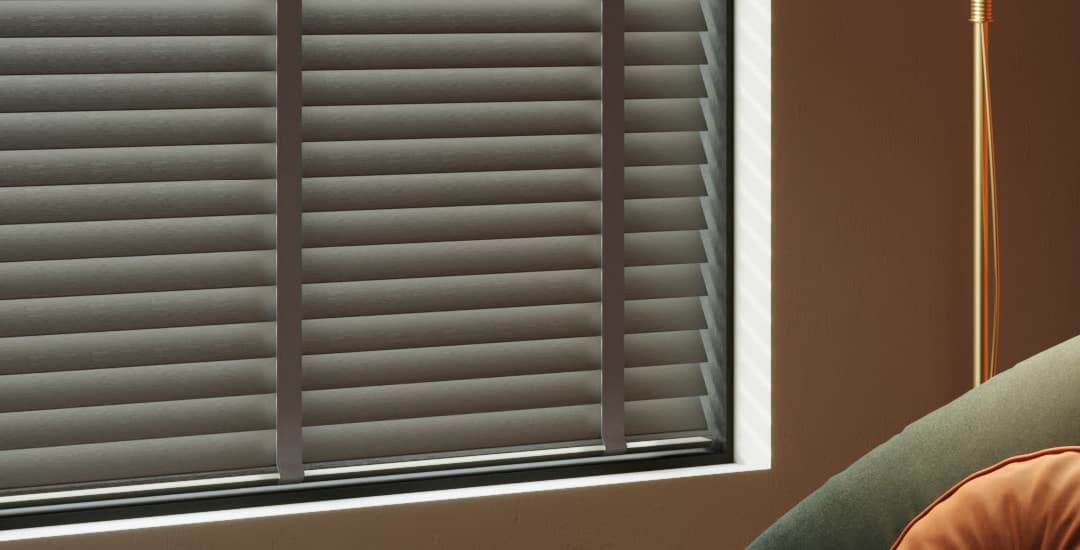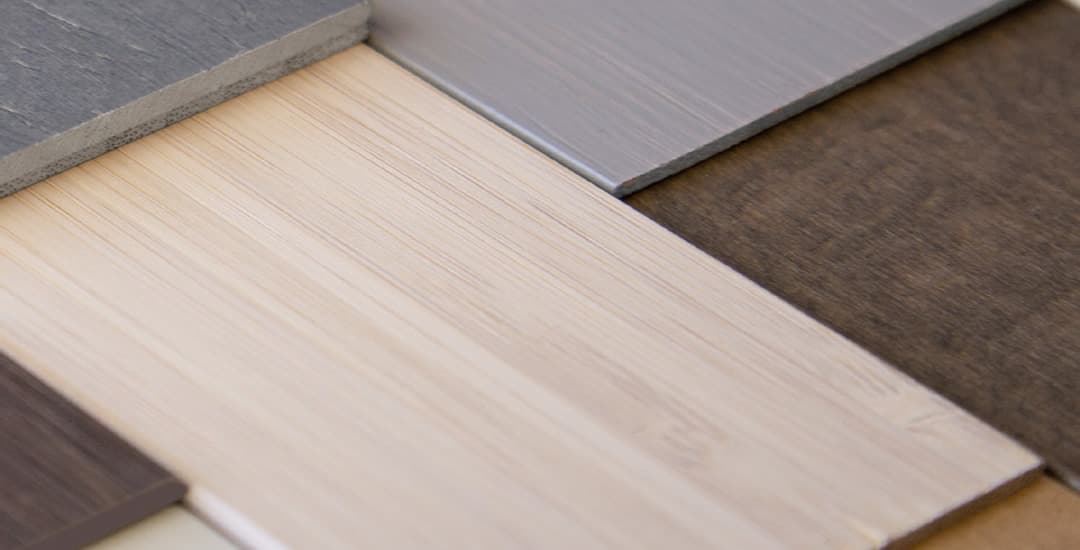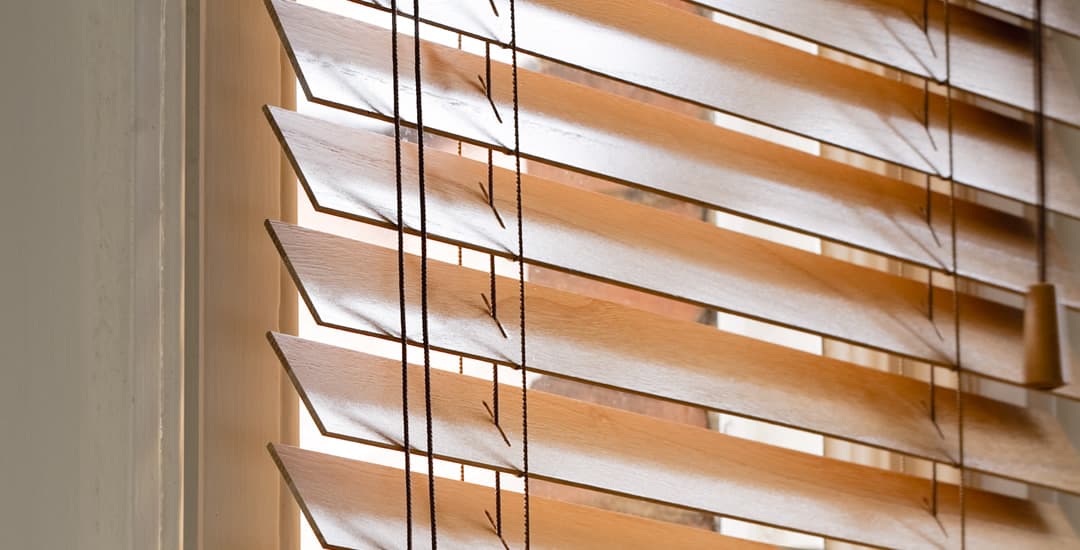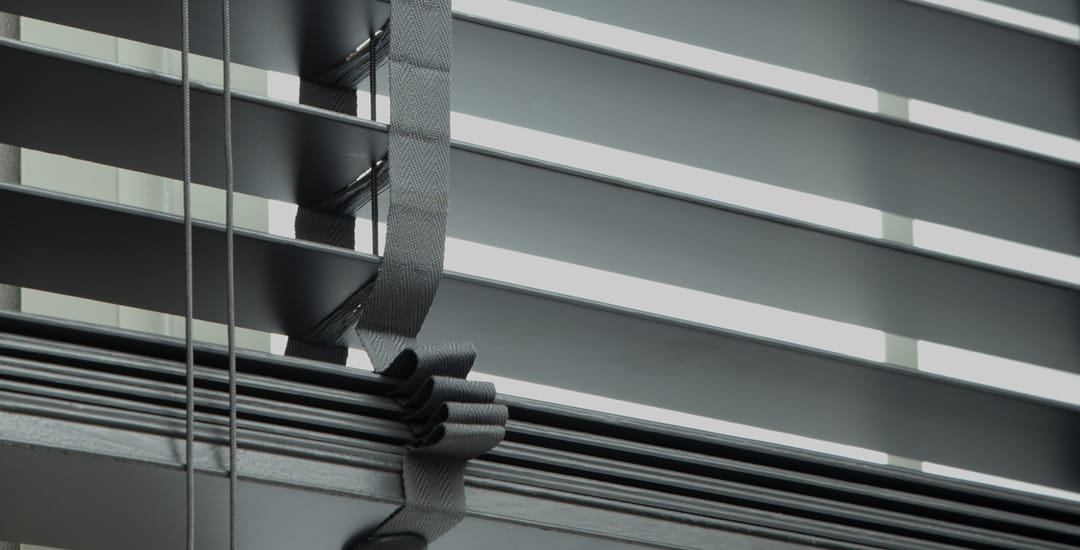
Real wood blinds are almost always made from a type of hardwood; and not, as many people assume, pine! In fact, even pine effect or pine finished wooden blinds are usually made of hardwood, because hardwood is sturdier and easier to work with, and more or less negates the risk of the slats bowing or bending under pressure, as long as they’re made of the appropriate thickness and are properly supported when hung.
What are real wood blinds made of as standard?

Hardwood, with basswood being the most commonly used type, although there are a few other popular and suitable alternatives to this too depending on the sort of quality and finish you’re looking for.
Theoretically, real wood blinds can be made from any type of wood you can think of, and you may actually find blinds made from low cost and very light/pliable types of softwoods like pine within some ranges of cheap, readymade blinds.
Also, real wood blinds may in some cases be made of less common hardwoods and even very costly ones that are slow to grow and at real threat of total deforestation, so it’s a good idea to look into the provenance of the wood that any blind you’re considering getting is made from before you buy.
This is both to ensure that it’s up to the task at hand (so avoid softwoods) and so that you’re not inadvertently supporting non-sustainable growing methods or contributing to environmental and ecological damage in developing nations by buying an exotic, rare, or non-sustainable wood type.
What material are wooden blinds usually made from?

When it comes to good quality made to measure real wood blinds sold by UK retailers, real wood blinds will most commonly be made from basswood, with maple, poplar, and oak also being popular.
We sell basswood blinds in the main part, but we also sell a range of luxury real wood blinds made from offerings of basswood, and also abachi and bamboo as well.
The wood is then cut to order for each blind into uniform slats, which are sanded and then may be either painted or stained to achieve a smooth, even finish. When dry, they’re treated with a specialist sealant or finishing agent to protect the wood from normal levels of atmospheric humidity, fading, and potential warping.
The blind is then assembled with the slats mounted onto lift and ladder cords (sometimes ladder tapes for a premium finish), and suspended from the headrail that also contains the blind’s operating mechanism and controls. The whole array is then topped off with a pelmet or valance made from the same wood/finish as the blind’s slats itself.
What wood is used for wooden blinds that are eco-friendly and sustainably produced?

The most popular hardwoods used to make real wood blinds are basswood, maple, oak, abachi, bamboo, and poplar, and these can all be (and should be) sustainably grown and harvested, and processed and shipped in an environmentally sound manner.
This is the case for all hardwood blinds sold by reputable and ethical retailers like us, but may not always be the case from all sellers; and you should be particularly speculative about this if you’re looking to buy real wooden blinds made from an exotic or uncommon type of wood.
If you want to take a deeper dive into the eco-credentials of our real wood blinds for sale, I’ll be happy to provide you with chapter and verse on where our wood comes from, how it is grown, the journey it takes to reach us, and how we monitor and ensure the sustainability and credentials of it in detail; just drop me a line.




